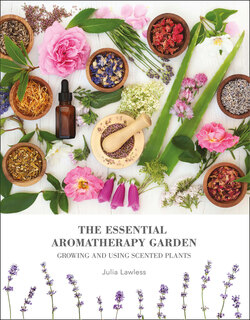Читать книгу The Essential Aromatherapy Garden - Julia Lawless - Страница 12
ОглавлениеTHE SECULAR PLEASURE GARDEN
The secular pleasure gardens were the domain of the nobility, and later in the Middle Ages became more linked with sensual delight than contemplation of the eternal, as in the monasteries. These gardens were called hortus deliciarum, or the ‘garden of delight’, a scented sanctuary where men and women could meet discreetly in a romantic setting as opposed to the sacred hortus conclusus of the church. Medieval courtly love, as we often see it depicted and described in poetry, was played out in these fragrant pleasure gardens. Much idealised romantic literature, such as the French allegorical poem Le Roman de la Rose (fifteenth century), contains descriptions of a lover meeting his lady in her private, secret garden and, in this case, warning of the dangers of profane love.
… there was always an abundance of flowers. There were very beautiful violets, fresh, young periwinkles; there were white and red flowers, and wonderful yellow ones. The earth was very artfully decorated and painted with flowers of various colours and sweetest perfumes.
(Guillaume de Lorris and Jean de Meung c. 1235–1280, Visions of Paradise)
These secluded gardens featured high trellising, overhung with fragrant climbers (often roses or other sweet-scented climbers) and scented chamomile seats for lovers. Hidden rose arbours became the background for courtly love and romance in a highly stylised setting. They often contained a rose garden and a water feature such as a fountain, or a clear pool. Sensuality rather than spirituality became the vogue and fragrant plants emphasised pleasure rather than being transcendent vehicles to the Divine.
Ironically, according to Sue Minter, Curator of the Chelsea Physic Garden, the pleasure garden was originally a:
secret garden associated with the Virgin Mary. The garden represented her virginity and its flowers and fruits, the flowering of her virginity. It was paradise found, as against the paradise lost of the lost Eden.
(Sue Minter, The Healing Garden)
Clearly though, the sacred garden of Mary had lost its primarily religious connotations, and paradise found appeared to be linked more with worldly than divine love!
Detail of The Lady and the Unicorn, Musée de Cluny, Paris.
Francis G. Mayer/Corbis Historical; Shutterstock
Medieval tapestries also frequently depicted courtly gardens with seasonal flowers growing wild in grass: ‘flowery meads’, which were highly popular in the Middle Ages. These were places of relaxation and romantic dalliance and included all the flowers seen throughout the year. Some of the most exquisitely beautiful tapestries showing flowery meads are those depicting a lady and a unicorn, from the series The Lady and the Unicorn. Here the lady and her maid are shown fashioning a crown with clove-scented carnations or ‘gilliflowers’, which were extremely popular at the time because of their spicy fragrance. Carnations were also associated with betrothal and marriage on account of their potent, seductive fragrance. These tapestries, hanging in the Musée de Cluny in Paris, were woven around 1500 and were known as millefleurs, meaning ‘a thousand flowers’. They portrayed an abundance of sweetly scented flowers: roses, violets, wallflowers, pansies and forget-me-nots. Flowering fruit trees and aromatic herbs were also shown but always growing in the flowering mead, not in formal beds.
